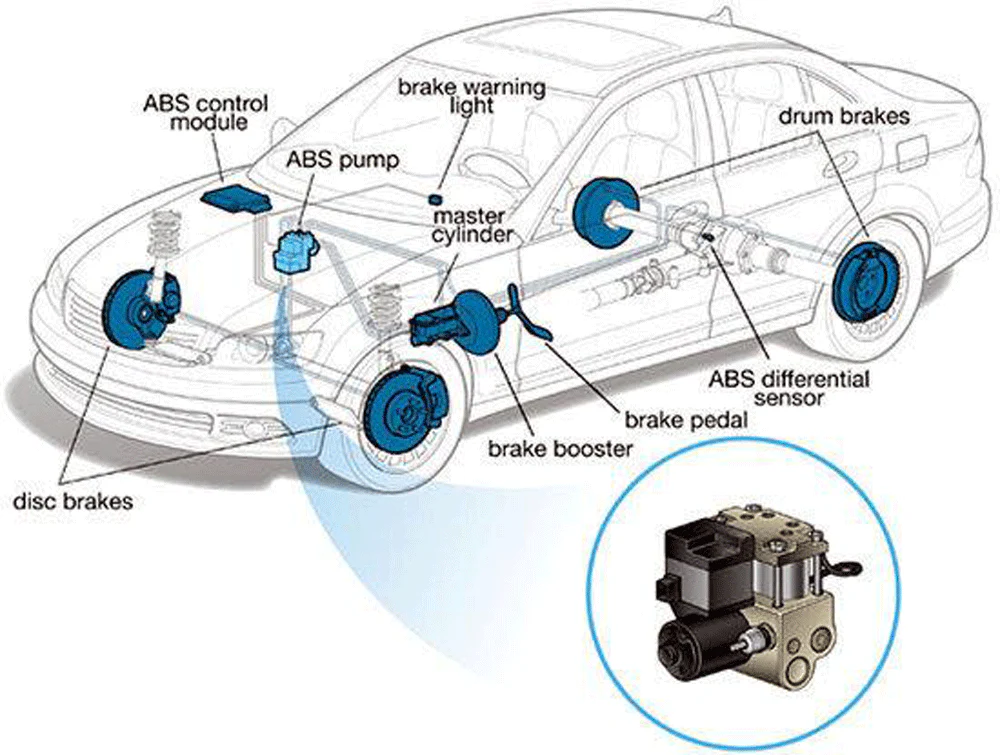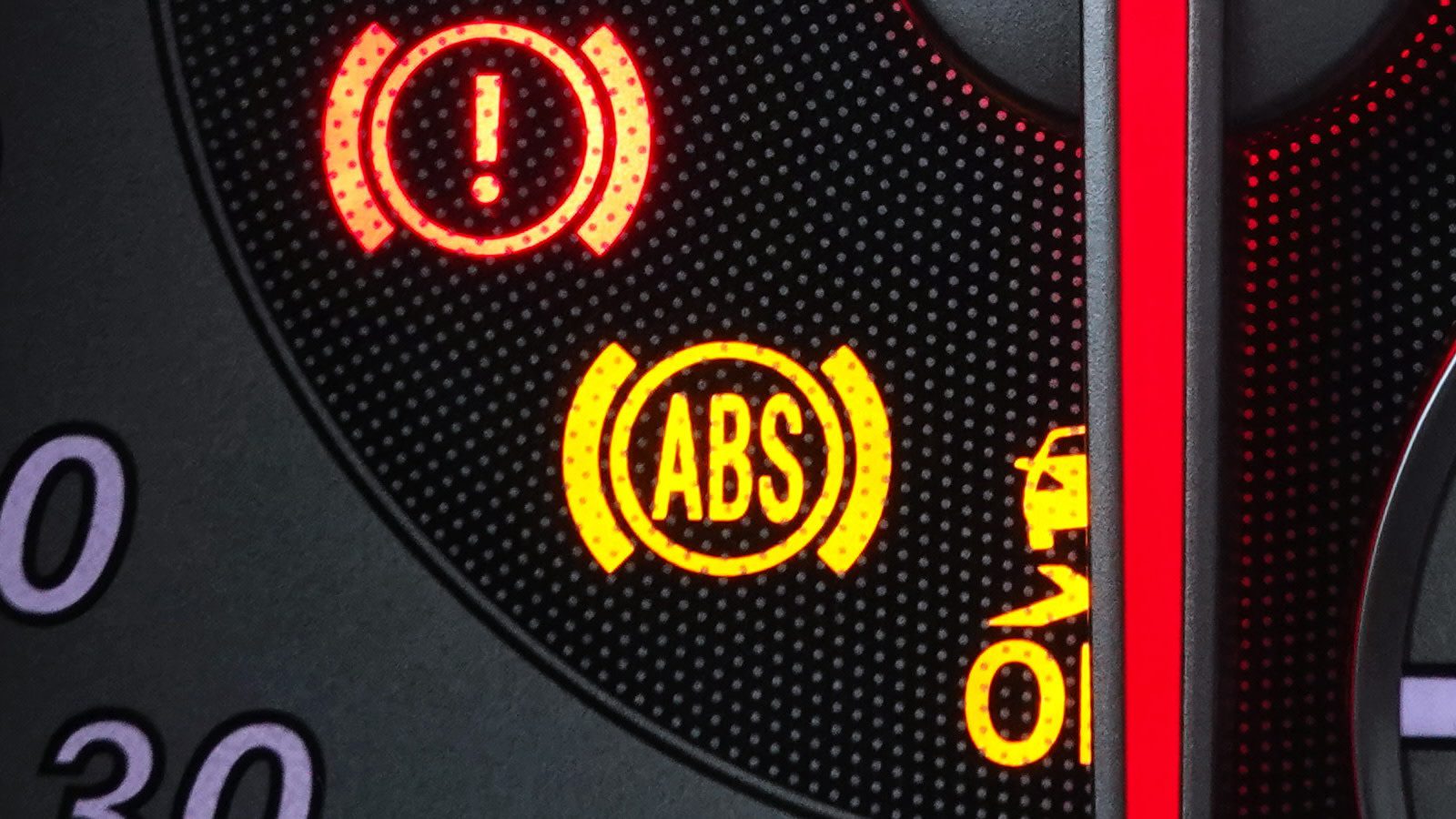Ensure Your Anti-Lock Brakes Work Safely—No Expensive Tools Needed!
1. Why Test Your ABS System? 🔧
The Anti-lock Braking System (ABS) prevents wheel lockup during hard stops, maintaining steering control. Ignoring ABS issues risks:
- Longer Stopping Distances: Especially on wet or icy roads.
- Failed Inspections: Most states require functional ABS for safety checks.
- Costly Repairs: Damaged wheel sensors or modules cost 200–1,000+.
Key Stat: 35% of ABS failures are caused by dirty sensors or low brake fluid (NHTSA).

2. Tools You’ll Need 🧰
| Item | Purpose | Cost |
|---|---|---|
| OBD-II scanner | Read ABS codes | 30–100 |
| Jack & jack stands | Lift the car (optional) | $50 |
| Multimeter | Test sensor resistance | $20 |
| Brake fluid tester | Check fluid condition | $15 |
| Clean cloth & brush | Clean wheel sensors | $5 |
Pro Tip: Use a Bluetooth OBD-II scanner (e.g., FIXD) for smartphone diagnostics.
3. Step-by-Step Testing Guide 📋
Step 1: Check the ABS Warning Light
- Turn the ignition to “ON” (don’t start the engine).
- ABS light should illuminate briefly, then turn off.
- Light stays on: System has a fault.
- Light never comes on: Bulb or fuse issue.
Step 2: Scan for ABS Codes
- Plug the OBD-II scanner into the port under the dash.
- Read codes (look for C-codes like C0110 or C0245).
- Google the code to identify the faulty component (e.g., sensor, pump).

Step 3: Test Wheel Speed Sensors
- Lift the car and remove the wheel (if needed).
- Locate the sensor near the brake rotor/hub.
- Disconnect the sensor and test resistance with a multimeter:
- Normal: 800–2,000 ohms (check your manual).
- Open circuit (OL): Replace the sensor.
- Clean the sensor with a cloth and brake cleaner if dirty.

Step 4: Check Brake Fluid & Fuses
- Inspect brake fluid level (min/max marks on reservoir).
- Test fluid moisture with a tester (replace if >3% water).
- Check ABS fuses in the fuse box (replace if blown).
Step 5: Road Test the ABS
- Find a safe, empty area (parking lot or quiet street).
- Accelerate to 20–30 mph and brake hard.
- ABS working: Pedal vibrates, wheels don’t lock.
- No pulsation: ABS isn’t engaging (likely sensor or module issue).
4. Common ABS Problems & Fixes 🛠️
| Issue | Symptoms | Solution |
|---|---|---|
| Dirty sensor | Intermittent ABS light | Clean with brake cleaner |
| Faulty module | Multiple codes, no pedal pulse | Replace module (300–800) |
| Low brake fluid | Spongy pedal, ABS light | Top up fluid (DOT 3/4) |
| Damaged wiring | Chewed wires near wheels | Splice and insulate |
5. Top 5 Products for ABS Testing 🏆
| Product | Purpose | Price |
|---|---|---|
| FIXD OBD-II Scanner | ABS code reading | $60 |
| INNOVA 3160 Multimeter | Sensor resistance test | $30 |
| Castrol DOT 4 Brake Fluid | High-performance fluid | $15 |
| CRC Brake Parts Cleaner | Degrease sensors | $8 |
| BlueDriver Bluetooth Scanner | Advanced ABS diagnostics | $100 |
6. 7 Deadly Mistakes to Avoid ❌
- Ignoring the ABS Light: Small issues escalate to system failure.
- Using Wrong Brake Fluid: DOT 3 ≠ DOT 5 (check your manual).
- Testing on Public Roads: Dangerous and illegal.
- Overlooking Reluctor Rings: Rust or debris disrupts sensor readings.
- Forgetting Tire Pressure: Uneven pressure triggers false ABS alerts.
- Mixing Sensor Brands: OEM sensors are more reliable.
- DIY Module Repairs: Complex programming often needs a pro.
7. FAQs ❓🌟
Q1: Can I drive with the ABS light on?
A: Yes, but you lose anti-lock braking—drive cautiously and fix ASAP.
Q2: How often should I test my ABS?
A: Check fluid monthly; full test every 6 months or after brake work.
Q3: Why does my ABS make grinding noises?
A: Likely a failing pump motor or air in the hydraulic system.
Q4: Can a bad battery affect ABS?
A: Yes! Low voltage confuses the ABS module.
Q5: Are ABS sensors interchangeable?
A: No—front/rear sensors differ. Buy vehicle-specific replacements.
8. Free ABS Testing Checklist 📝
[🔗 Download Your Free PDF Here]
Includes:
- Brake fluid inspection steps.
- Sensor cleaning guide.
- Road test safety tips.

Final Pro Tips 🌟
- Check Reluctor Rings: Clean rust/debris with a wire brush.
- Bleed Brake System: Air bubbles disrupt ABS hydraulics.
- Monitor Tire Treads: Uneven wear triggers false sensor readings.
🚗 Share this guide to help friends stay safe on slippery roads! 🚗
Expand Your Automotive Knowledge 📝
Explore 500+ Free Expert-Curated Guides
🚗 Learn New Skills
From basic maintenance to advanced repairs — clear, actionable tutorials for every skill level.
🌍 Access Anywhere
Mobile-friendly guides with HD visuals. No downloads required.
- Guides & Tutorials
- Car Maintenance 101
- Diagnostics & Troubleshooting
- Seasonal Maintenance
- Budget-Friendly Repairs
- Electrical Systems Guide
- Car Safety & Reliability
- Tools & Product Reviews
- Routine Maintenance
- Car Modifications & Upgrades
- Buying/Selling Guides
- Eco-Friendly Car Care
- Advanced Repairs
- Car Laws & Compliance
- Emergency Repairs
- Future Car Tech


